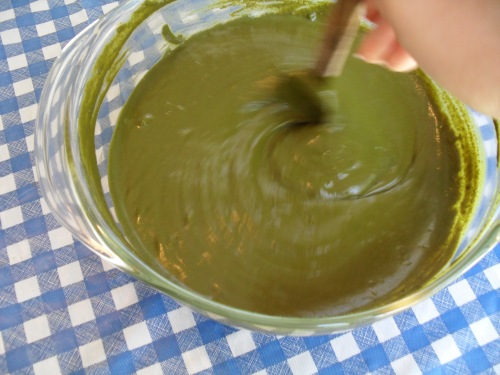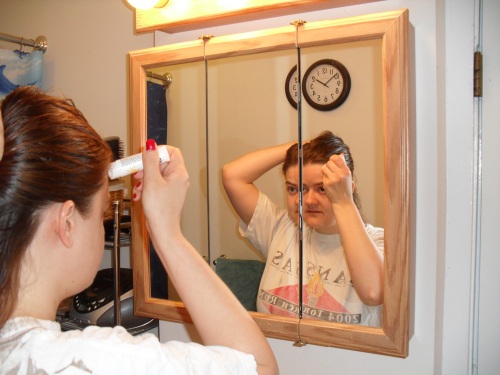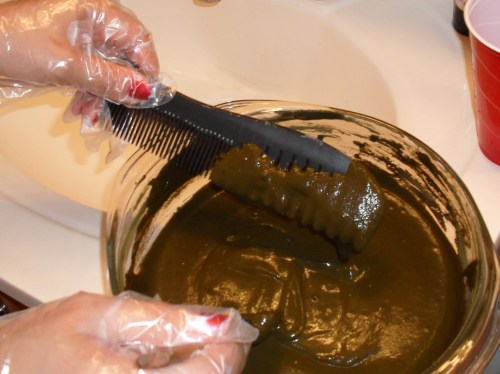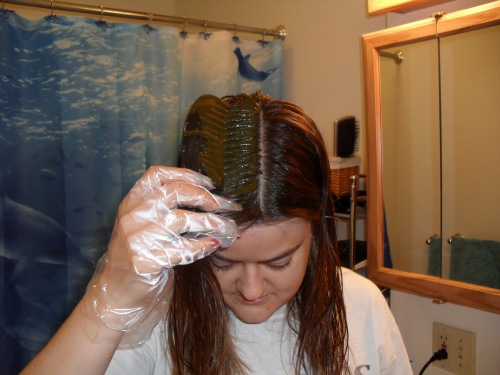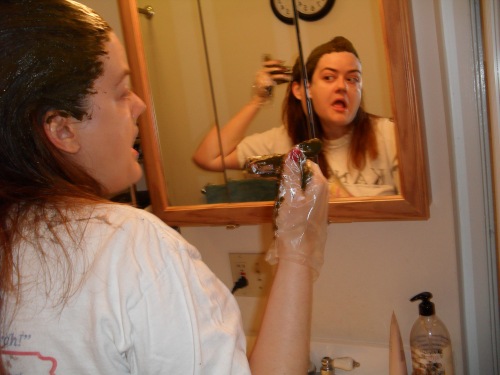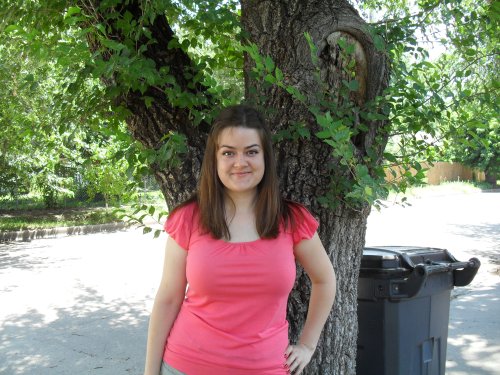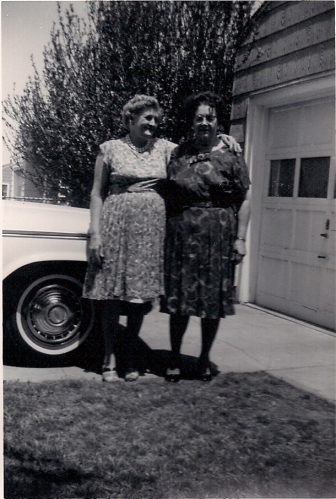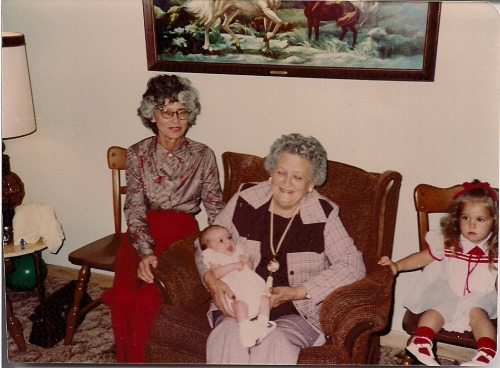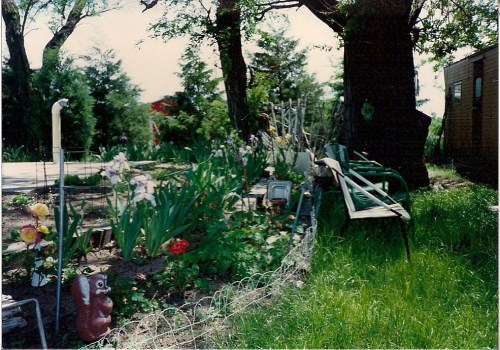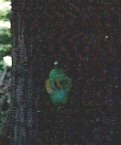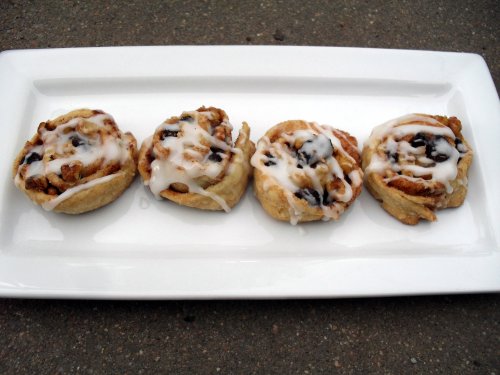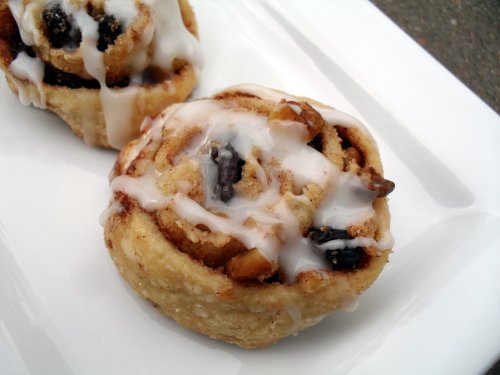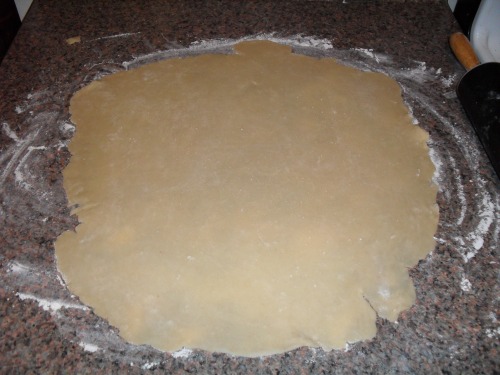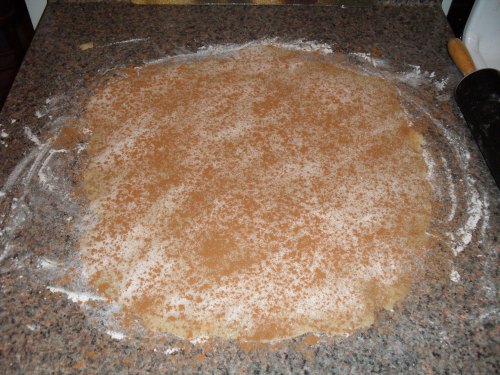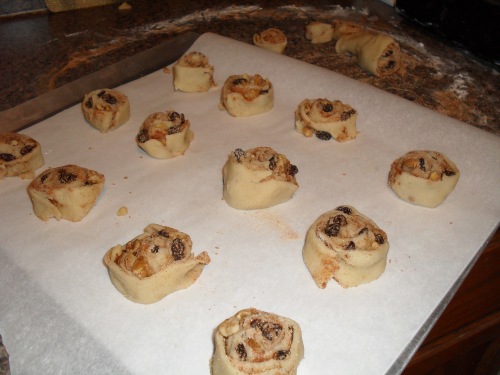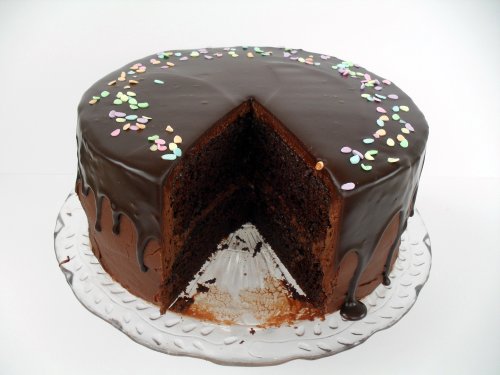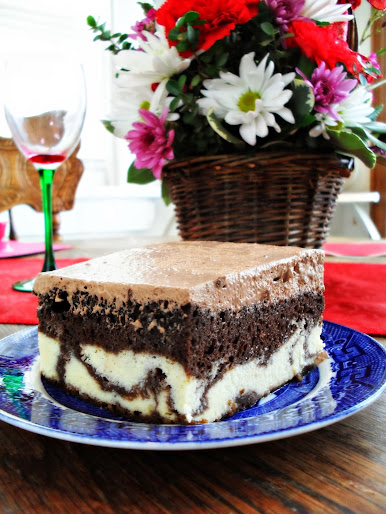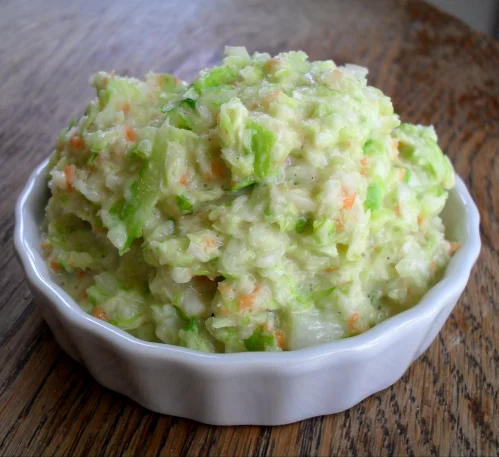
I posted a cake pops tutorial last January and have gotten so many questions in the comments section, usually the same few repeatedly, that I’m having trouble locating them to reply when a new one is posted anywhere other than at the very end. An FAQ is long overdue, and I hope to address all the concerns and questions I have received over the last year and a half so that my readers have somewhere to go to resolve their problems and get their questions answered.
I have made many batches of cake pops, balls/truffles, and cupcake bites, but I have NEVER done anything creative like Bakerella so if you’re looking for inspiration, check out her site. This post is solely meant to help you with the basics. If you have a question that isn’t answered here, leave it in a comment or email me at vraklis@yahoo.com and I’ll add it to this post. Thanks!

Frequently Asked Questions
Q: Why is my chocolate cracking?
A: I have found mine cracks if I overheat the chocolate before dipping, or if I freeze the cake balls/pops very long before dipping. Make sure you very gently heat your chocolate–you never want it to get hot but just barely warm enough to melt.
The surest way to keep your chocolate from cracking is to place your styrofoam block in the refrigerator, or even better, the freezer, and place each pop on it after dipping. This is a pain, but if you have a lot of issues with cracking, this will prevent it. However, don’t leave your pops in the freezer too long. Just let them sit long enough to get hard, then remove. If they get too cold, they will sweat when you remove them from the freezer.
The fix: if your chocolate does crack, just spoon some melted chocolate over the crack, making sure to cover it well. It won’t be pretty, but it will keep the cake ball contained and will still be delicious. If you are using sprinkles, that will help disguise it.
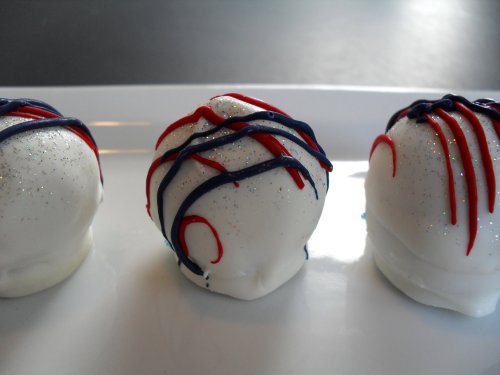
Q: My chocolate is too thick to dip. What’s going on?
A: You most likely overheated your chocolate. Chocolate is temperamental and needs to be heated very gently. I’m extremely careful when microwaving chocolate, stirring it very well every 15 seconds (after the initial 30 seconds-1 minute, or whatever your package says) so that the residual heat does the melting instead of doing it all with the heat of the microwave, which will overheat it.
The fix: stir in some vegetable or canola oil until thinned to the desired consistency. Your chocolate will dry softer than it would have, but it will still be firm enough to hold the cake ball inside.
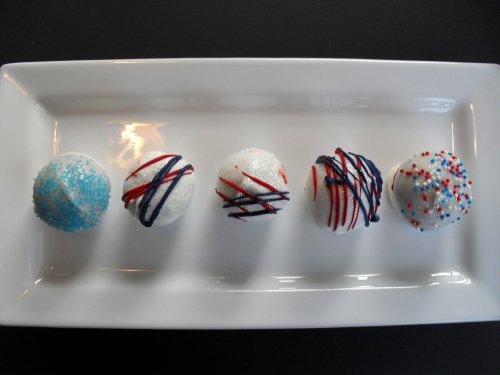
Q: What chocolate melter are you using in your video? Could I use a crockpot instead?
A: It’s a Wilton Chocolate Melter Deluxe, which is no longer for sale. Wilton has upgraded the pot to a “Chocolate Pro,” available for purchase here. I don’t actually use mine for melting the chocolate as it takes a long time and I’m impatient, but after melting it in the microwave, I like to pour it into the melter and set it on “warm” to keep the chocolate from solidifying during dipping. I do find I need to shut it off every so often to keep the chocolate from getting too hot.
I have not tried using a crockpot to melt chocolate, but a reader, Sherry, says that she always melts her chocolate in the microwave and then puts it in the crockpot on the lowest setting to keep it warm while she dips.

Q: Why are my cake balls falling off the sticks?
A: This could be due to many things. Most likely, you added too much frosting. Start with less and add more as needed. Depending on the moistness of the cake you are using, you may not need any at all to get the crumbs to hold together. I usually use 1/3 to 1/2 cup, even with moist cakes, because I prefer the sweeter flavor to those without any frosting, and that isn’t so much that they are mushy. Second, make sure the cake balls are cold before you start dipping. I’ve noticed if I leave my tray of balls out while I’m dipping, by the time I get to to the last ten or so they are starting to slide off the sticks because they aren’t as cold. Third, make sure you dip the sticks in chocolate before inserting them into the balls (is it just me, or does that sound kinky?). This will ensure that the balls adhere to the stick.

Q: What is almond bark? And can I use regular chocolate instead?
A: That is just what we call candy coating around here. It’s also called “chocolate flavored bark” and “vanilla flavored bark.” It’s basically chocolate, white or regular, that has palm kernel oil added so that it dries to a nice, hard finish without having to temper it. You can use any type of chocolate you wish, whether it’s the real stuff, the white stuff, chocolate melting wafers, or candy melts like Wilton has. If you use real chocolate, add a tablespoon of vegetable shortening or oil per pound or bag of chips (12 oz) and melt them together.
Q: How can I color my white candy coating?
A: I have used powdered icing color with success, but regular icing gel color makes it seize up. You can do it this way, and just add oil to thin the chocolate back out (I have done this), but the best thing to use is oil-based colors made specifically for candy, such as these. Check out your craft stores, like Michael’s or Hobby Lobby, or if you have a local cake supply store, they might have them as well. These same stores usually offer colored candy melts as well, so that you don’t have to color them yourself.
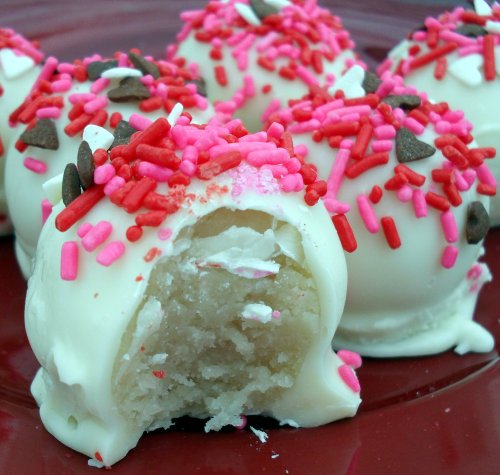
Q: I find cake balls too sweet. Is there something I can use besides frosting?
A: Certainly! All you needs is a binder to keep the cake crumbs stuck together when you roll them into balls. I have a co-worker that uses peanut butter in her chocolate cake balls and lemon pie filling in her lemon cake balls. Other ideas would be pudding, cream cheese, softened butter, bittersweet or semisweet ganache, sour cream, mayonnaise, jams & jellies. Just be careful and add a little at a time, as many of these would go further than frosting and you probably wouldn’t need very much.
If you don’t want to add anything, here’s what you do: make my favorite chocolate cake, process it to crumbs in the food processor and then wad up balls of the crumbs and roll! This particular recipe sticks together with nothing added! The pops end up tasting more like cake than candy, although the texture is still more dense since the crumbs are compacted. Here is the picture of the inside of a cake pop made this way:

Q: Do I have to use a cake mix?
A: No, make a scratch cake if you wish! I prefer the taste of pops made with a cake mix, and since it takes so much time to make the pops themselves, making the cake from a mix is just a shortcut, but not required.

Q: How should they be stored?
A: Store them covered in the refrigerator. I prefer to remove mine at least a couple hours before serving to serve at room temperature, but they can be served cold and really should be if your climate is very hot or humid. Here in Kansas, I don’t have to refrigerate them and if I’m making them the day before serving, I won’t put them in the fridge at all.
 These are “Cupcake Bites,” which you can learn how to make here.
These are “Cupcake Bites,” which you can learn how to make here.
Q: How far in advance can I make them? Can I freeze them?
A: You can make them a month in advance, if you like, because yes you can freeze them! Once the chocolate is hard, there is no risk of the chocolate cracking from freezing the pops/balls and removing them. If you freeze them, be sure to defrost them in the refrigerator 24 hours before servings so that they won’t sweat when you serve them. They sweat like crazy if you take them straight from the freezer, especially in the summer. If you don’t wish to freeze them, I’d recommend making them no more than a week in advance and keeping them in the refrigerator.

Q: Why are my sticks getting yellow and oily?
A: I have had this happen only once, when I used a real buttercream (made with mostly butter and eggs) instead of American (powdered sugar-based) buttercream. I think if there is too much fat in your cake ball mixture, it will seep into the sticks over time and turn them yellow. Try using less frosting next time. Lately I’m using only about 1/3 cup per batch.

Q: Can I use something besides chocolate or candy coating for dipping?
A: I have not personally tried anything else, but one reader had success using a chocolate glaze, and another (thanks, Praveena!) had the brilliant idea of using royal icing for her friends that do not like chocolate. (Royal icing dries hard so you’d want a very thin layer.) If you wish to try the aforementioned glaze, here is the recipe Michelle used and shared with me:
1/2 cup heavy cream
2 tablespoons light corn syrup
1 1/2 cups chocolate chips
Put cream and corn syrup into pot and heat until it just starts to boil. Then remove from heat add chocolate chips, cover and let stand for 5 minutes. Then stir until combined. A note from me: this is basically ganache with corn syrup added and will get quite firm when cold. I’d recommend keeping the finished pops in the fridge to keep them intact.
Q: What is your most popular flavor, and are there other recipes you can share?
A: I found a slew of recipes on Wilton.com but have no special ones of my own. I’ve only tried three flavors myself: chocolate, white, and red velvet. Chocolate is the best and red velvet is the most popular (because of Christmas and Independence Day). White isn’t bad, but just not as good as chocolate, but I did like it a lot when I filled the centers of some white cake balls with a bit of wedding cake frosting–it was for snowball cake truffles at a Christmas eve party but the taste was like wedding cake truffles–pretty cool! I almost always mix my cake crumbs with homemade cream cheese frosting, but have also used mocha buttercream, white celebration frosting, and ganache. It really doesn’t matter what frosting you use–it’s all good.
Q: What size sticks to you use, and where can I find them?
A: The ones I usually get are about 4″ long, but you can use any length you wish. I get mine at Walmart in the cake decorating supplies section, but you can also find them at craft stores like Michael’s and Hobby Lobby, or cake & candy supply stores.

Q: Do I have to use a food processor to crumble the cake?
A: This is my preferred method, especially when your cake has some dry edges, because it gives you uniform crumbs that easily mix with the frosting, but I’ve also used my hands and it gets the job done.

Q: I’ve noticed that some of my cake pops start leaking oil once the chocolate is set. Why is this happening?
A: I usually have 1 or 2 pops or balls per batch that leak oil, and for me it is always because 1) a miniscule spot on the ball didn’t get covered with chocolate or 2) I left an air bubble in the chocolate before it set, which creates a weak point that can’t contain the pressure of the filling so that it eventually starts to squirt out. If there is any spot not covered, the oil will separate from the cake mixture and start leaking out (I’ve even had the cake ball mixture itself squirt out!), so be thorough when you’re dipping. Also, make sure you poke any air bubbles you see before the chocolate hardens so that the liquid chocolate will fill in the space before it sets. I usually use the ones that spring leaks for “taste testing” since I always like to enjoy one or two of them from each batch, but if you want to fix it, you can: dab off the oil and spoon on a little bit of chocolate onto, around, and a little beyond the area where the oil has touched. If you don’t spread the chocolate further than where the oil was, the oil will follow the same path out and will leak again, despite having been recovered. You need a tight seal and that means chocolate on chocolate with no oil on the surface. Also, if you use sprinkles that have sharp edges, be careful and don’t use a lot of force because if they poke through to the cake beneath the chocolate, oil will start to leak out from the area once the chocolate is set.
Additional info: the glitter you see on the snowball (or wedding) cake truffles and on the July 4 cake balls is edible and is called “Disco Dust.” I used “rainbow” on the snowballs and hologram silver (mixed with rainbow) on the July 4 balls, and it is available in a wide range of colors. I recommend rainbow, as it goes well with any color. I purchase mine at Cake Stuff! in Wichita, KS, but you can find it online as well.
Related posts: Step-by-step cake pop tutorial, instructions for making cake pops with leftover cake, Cupcake Bites recipe.


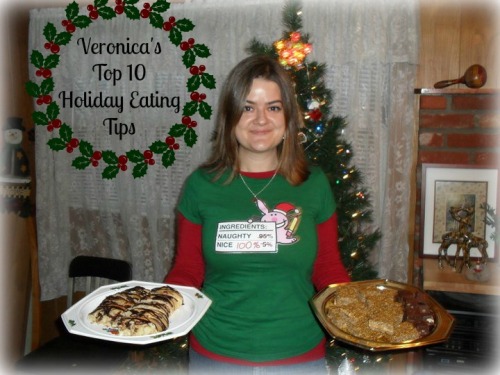








 These two cookbooks are fab-u-loso! They have loads of healthy, tasty meals as well as really helpful kitchen tips. I’ve found lots of great dinner recipes, and “Whole Foods for the Whole Family” is my go-to source for baked goods (pancakes, waffles, breads, muffins, etc.) made with mixed flour (I use half whole-wheat, half white/all-purpose). Their cooking philosophy is right in line with mine, and they give recipes for flavorful, nutritious meals made from non-processed foods.
These two cookbooks are fab-u-loso! They have loads of healthy, tasty meals as well as really helpful kitchen tips. I’ve found lots of great dinner recipes, and “Whole Foods for the Whole Family” is my go-to source for baked goods (pancakes, waffles, breads, muffins, etc.) made with mixed flour (I use half whole-wheat, half white/all-purpose). Their cooking philosophy is right in line with mine, and they give recipes for flavorful, nutritious meals made from non-processed foods.
 I am a Pampered Chef consultant (only in the most technical sense, I’ve never done a “home party” I just keep up my consultant status to reap the benefits since I LOVE their products) and I have SEVERAL Pampered Chef cookbooks. I will tell you this about PC cookbooks… their recipes are good. Really good. But a decent amount of them rely on packaged foods, which is what I’m trying to scale back on. This one doesn’t. The title says it all.
I am a Pampered Chef consultant (only in the most technical sense, I’ve never done a “home party” I just keep up my consultant status to reap the benefits since I LOVE their products) and I have SEVERAL Pampered Chef cookbooks. I will tell you this about PC cookbooks… their recipes are good. Really good. But a decent amount of them rely on packaged foods, which is what I’m trying to scale back on. This one doesn’t. The title says it all.







